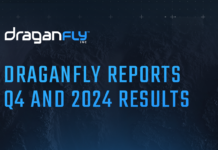In the ever-evolving world of IT infrastructure, safeguarding digital assets has become a paramount concern for organizations globally. As technology progresses, so too do the threats that accompany it. One such area that has increasingly come under scrutiny is the vulnerabilities present within system images—a foundational component of modern infrastructure. These system images, which include Amazon EC2’s AMIs, virtual machines, Docker containers, and others, are critical to building and maintaining a secure infrastructure environment. Surprisingly, recent studies have revealed that a staggering 87% of container images in production contain critical vulnerabilities, with these vulnerabilities remaining undetected for an average of 277 days.
This article aims to highlight the pressing need for organizations to modernize their image management practices to align with the security demands of contemporary cloud environments. A significant aspect of this modernization involves vulnerability and patch management. This process includes identifying, mitigating, and prioritizing vulnerabilities, as well as the operational tasks necessary to eliminate them. Without the right tools and processes, managing vulnerabilities and patches can become overwhelmingly complex and tedious, especially as organizations expand their cloud footprints.
Understanding Modern Infrastructure and Its Associated Security Risks
Cloud computing has revolutionized the way developers create and deploy applications. By transferring the responsibility of operating a data center to cloud service experts like Amazon, Microsoft, and Google, organizations have been able to focus on accelerating application development and deployment. Over the past decade, the adoption of cloud technologies has become widespread, improving speed and agility in provisioning infrastructure. However, this shift towards convenience and rapid deployment has introduced new security challenges.
Cloud environments are inherently distributed and dynamic, which makes risk management significantly different from traditional on-premises data centers. Organizations that embrace the cloud often face security challenges in several key areas:
- Visibility: Understanding potential risks begins with identifying the infrastructure resources in use. This can be a daunting task for organizations that lack standardized deployment practices and have assets that are constantly evolving. In such cases, maintaining a comprehensive inventory of resources is challenging.
- Updating: Keeping infrastructure resources updated is crucial for maintaining security, ensuring compliance, and accessing new features. Manual update processes can be error-prone and costly, slowing down response times when security incidents occur.
- Scaling: Without centralized automation platforms for managing the infrastructure lifecycle, scaling can result in numerous changes that exceed the capacity of security and IT operations teams to manage manually. This makes it difficult to keep pace with necessary actions.
When these areas are not modernized for hybrid-cloud and multi-cloud environments, inconsistencies in security and compliance enforcement across an organization’s infrastructure arise, leading to more vulnerabilities. Organizations often face issues like increased risks during initial deployment, difficulty identifying vulnerabilities in existing infrastructure, and time-consuming manual remediation processes.
Mitigating Vulnerabilities with HCP Terraform and HCP Packer
HashiCorp, a leader in infrastructure automation, has collaborated with some of the world’s largest organizations to address these challenges and facilitate effective cloud adoption. One effective strategy to tackle infrastructure vulnerabilities is implementing an industrialized, immutable approach to patching system images. An immutable infrastructure means once a system is deployed, it is not modified. Instead, updates or changes are made by deploying a new version of the system. This approach minimizes the risk of introducing new vulnerabilities.
A study by IBM highlights that the average time to exploit a vulnerability is 32 days. To counter this, HashiCorp recommends a continuous 30-day repave cycle for all system images. This means regularly updating and redeploying system images every 30 days to ensure the latest security patches and configurations are applied, thereby minimizing exploitation risks.
Terraform, HashiCorp’s infrastructure as code solution, assists organizations in provisioning and managing infrastructure. HCP Terraform is a managed service on the HashiCorp Cloud Platform, enabling consistent execution of Terraform in a stable, remote environment with direct integration into infrastructure workflows. Complementing this is HCP Packer, which codifies and manages system images. When used together, these tools create a comprehensive workflow that reduces infrastructure vulnerabilities through proactive risk management.
In this workflow, initial images are built with security and compliance integrated into their configurations, and metadata is stored in a centralized artifact registry using HCP Packer. HCP Terraform can then discover and validate these images. Should any changes occur to the underlying images, HCP Terraform’s drift detection feature flags them. Together, these tools facilitate the easy revocation of outdated images and update all related dependencies.
While reactive security measures, such as vulnerability scanning tools, are essential for checking existing infrastructure, the approach outlined here is proactive. By securing infrastructure before deployment, the burden on reactive methods is reduced, and there are fewer vulnerabilities for security teams to address.
By continuously implementing this repaving strategy, organizations can:
- Prevent vulnerabilities from being introduced into their infrastructure.
- Reduce the exploitation window by updating images before the average time to exploit is reached.
Additional Resources and Next Steps
For those interested in learning more about proactive risk management using HCP Terraform and HCP Packer, HashiCorp provides a wealth of resources. The HashiCorp Validated Pattern for vulnerability and patch management offers detailed insights into implementing these practices. Additionally, the recorded webinar "Address Vulnerabilities with Preventative Risk Management" provides further guidance on mitigating infrastructure vulnerabilities.
To explore these tools firsthand, individuals can sign up for free on the HashiCorp Cloud Platform and begin using HCP Packer and HCP Terraform to address vulnerabilities in their infrastructure.
For a more comprehensive understanding of how vulnerability and patch management with HCP Terraform and HCP Packer can be part of a unified platform approach to reducing risk, consider reading the solution brief "Securing and Governing Hybrid and Multi-Cloud at Scale with The Infrastructure Cloud." This document provides deeper insights into how these tools fit into a broader strategy for managing risk across hybrid and multi-cloud environments.
By adopting these modern practices, organizations can significantly enhance their infrastructure security, ensuring a more robust defense against the ever-evolving landscape of cyber threats.
For more Information, Refer to this article.


































